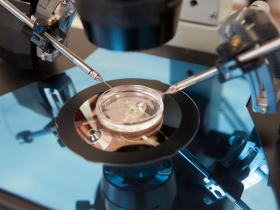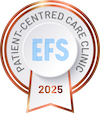Assisted Hatching Technique in IVF - What is it, How is it done, and When is it a good idea?
Babies are conceived when the man’s sperm penetrates the woman’s egg. This way fertilized egg attaches itself to the inner lining of the uterus and begins multiplying until it grows into a fetus. This process of fertilization can occur naturally during sexual intercourse or in laboratory conditions with the assistance of fertility specialists. The second is an essential part of the in-vitro fertilization technique (IVF). This is followed by a few days of observation, which controls whether the egg is dividing and developing into an embryo. The next stage, if everything goes normal, is embryo transfer, when the embryo is implanted in the woman’s uterus.
What is Assisted Hatching?
As the embryo develops, it creates a protective shell, scientifically called zona pellucida. This protective layer naturally breaks as the embryo grows. However, in the IVF process, doctors often prefer to help the embryo by creating a small incision in the shell. This is called assisted hatching technique. Doctors perform it in order to enhance the embryo's ability to attach itself to the uterine wall and thus improve the IVF treatment success rates.
How is Assisted Hatching Performed?
Assisted hatching involves creating a small hole or thinning the zona pellucida to facilitate the embryo's escape from its protective shell. This procedure is typically performed shortly before the embryo transfer, either on day three or day five of embryo development, depending on the clinic's protocols. There are different methods for assisted hatching.
-
Laser hatching
In this technique, the embryologist, with the help of a laser, carefully makes a tiny puncture to create a small hole or thinning in the zona pellucida. A scientific review [1] of all available techniques deems this as the least riskier for the embryo. Laser hatching is also said to avoid the shortcomings of alternative mechanical and chemical forms of assisted hatching. Additionally, it is fast, so the delicate embryo experiences less time outside of its incubator.
-
Chemical hatching
This method involves using chemicals, such as Tyrode’s solution - an acidified solution or an enzyme, to weaken or dissolve a small part of the shell. The chemical is applied for a short period to help facilitate the hatching process.

When is Assisted Hatching Recommended?
It is important to note that assisted hatching is only sometimes suitable for IVF patients. The decision to perform assisted hatching is based on individual circumstances and should be made by the fertility specialist in consultation with the patient. It is usually recommended in specific situations, such as:
-
Advanced maternal age
Women over the age of 38 may develop thicker zona pellucida, which can reduce the embryo's ability to hatch and implant.
-
Poor embryo quality
If the embryos have a thicker or abnormal zona pellucida, assisted hatching may improve the chances of successful implantation.
-
Previous IVF failures
In cases of patients who have experienced multiple unsuccessful IVF cycles, assisted hatching may be considered in order to enhance the chances of successful implantation.
-
Frozen-thawed embryo transfers
The freezing and thawing process can cause a hardening of the zona pellucida, making assisted hatching beneficial for the embryos' implantation.
Finally, while assisted hatching can improve implantation rates in certain specific cases, it can also carry a slightly higher risk of multiple pregnancies or damage to the embryos. Therefore, the potential benefits and risks should be carefully evaluated and discussed with the fertility specialist before considering this procedure.
Sources:
- Hammadeh, M. E., Fischer-Hammadeh, C., & Ali, K. (2010). Assisted hatching in assisted reproduction: a state of the art. Journal of Assisted Reproduction and Genetics, 28(2), 119–128. https://doi.org/10.1007/s10815-010-9495-3
- Assisted Hatching. (n.d.). https://www.reproductivefacts.org/news-and-publications/patient-fact-she...






